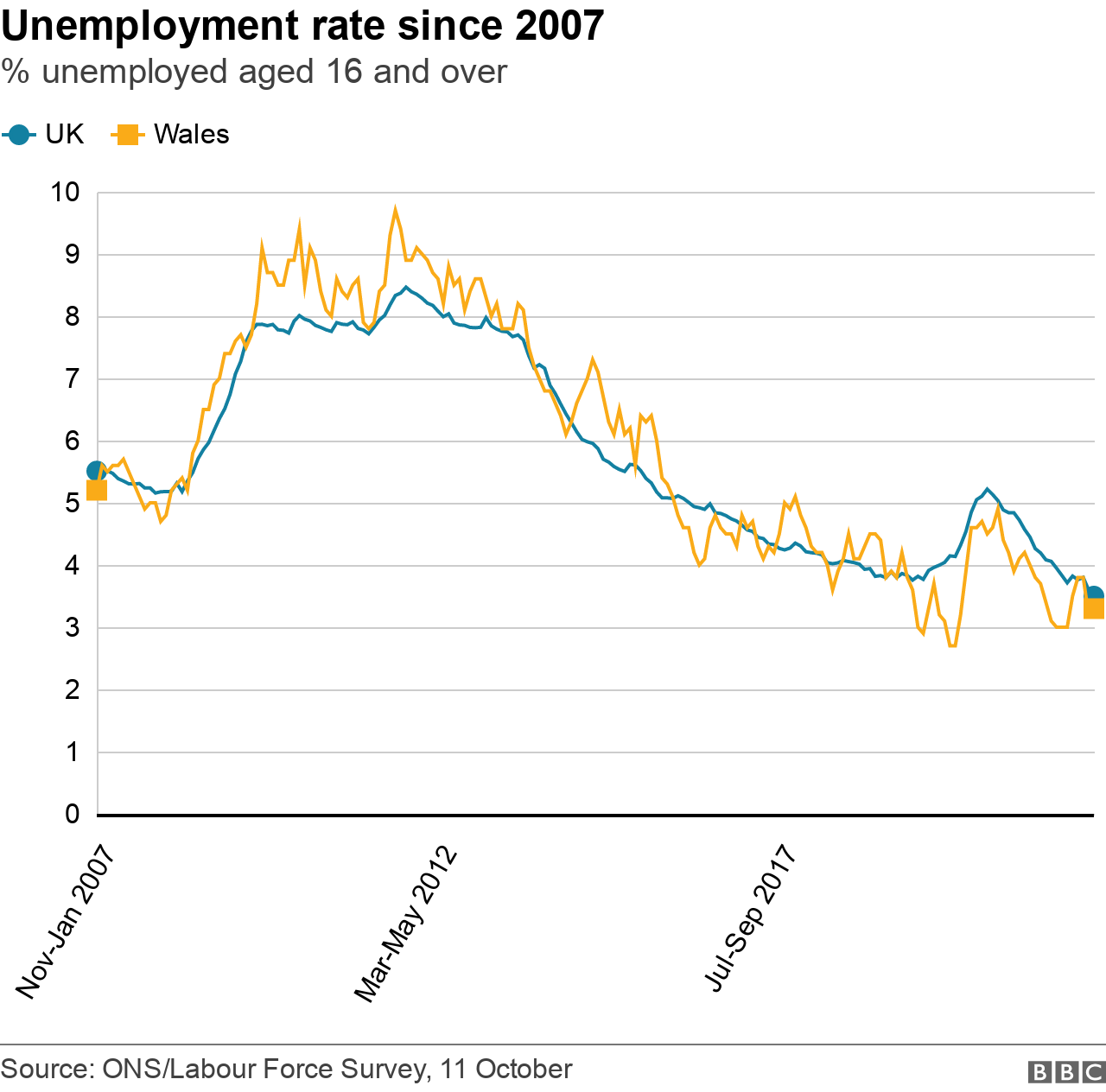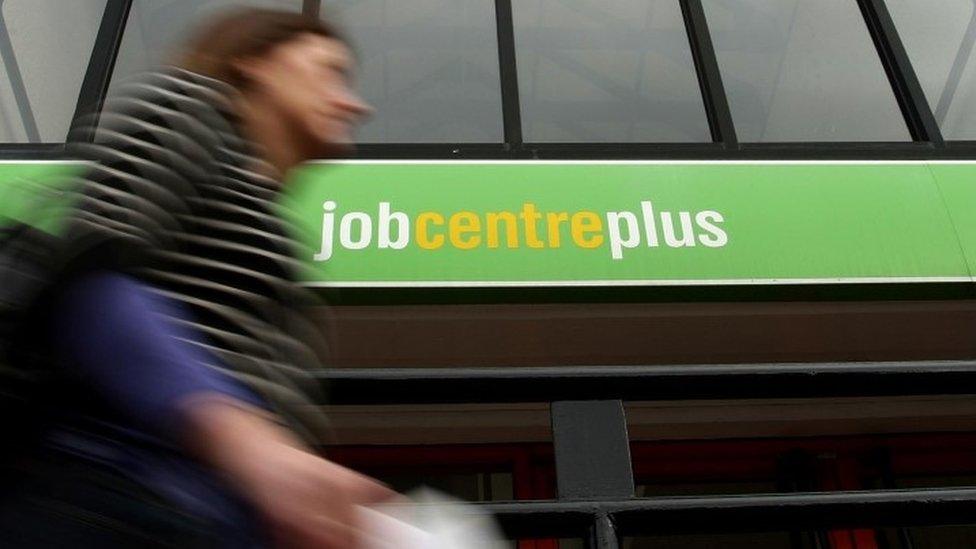Unemployment: Fewer working in Wales as jobless figure falls
- Published

The proportion of people not available for work in Wales is the third highest in the UK
The number of people working in Wales is falling, at the same time as there are also fewer unemployed people.
There were 25,000 fewer people working in Wales between June and August than the previous three months, Office for National Statistics (ONS) data shows.
This is as unemployment figures also decline by 8,000 in the same period.
This is because there are now fewer people working, but also more people that are not available to work, which is referred to as economic inactivity.
Across the UK as a whole, the unemployment rate was 3.5%, the lowest it has been in 50 years.
Although the overall number of unemployed people has fallen in Wales, the jobless rate has actually risen slightly from 3.2% to 3.3%.

There are 45,000 fewer people working in Wales than the same time last year, despite there being 13,000 fewer people unemployed.
Only the East Midlands has seen a steeper fall in employment than Wales.

The number of people in Wales not available for work was 38,000 higher than in the three months to May and 52,000 higher than the previous year.
People in this category are not available for work because they are ill, caring for someone or a full-time student. It is much higher in Wales than the average for the UK.
The proportion who are long term sick in Wales has increased to a third of this economically inactive group, the highest proportion for more than 16 years. That amounts to 147,000 people.
Only Northern Ireland and the North East of England have higher levels economic inactivity.
The figures also show a sharp disparity between pay increases. In the public sector pay is rising at 2.2%, compared with 6.2% in the private sector.
The average pay rise across the UK is now 5.4% but because prices are rising even more steeply , in real terms employees are experiencing a 2.9% cut in what they can buy with their wages.

FIGHT FOR YOUR RIGHTS: The Welsh consumer show fighting for YOUR rights

Related topics
- Published11 October 2022

- Published17 May 2022

- Published16 August 2022
